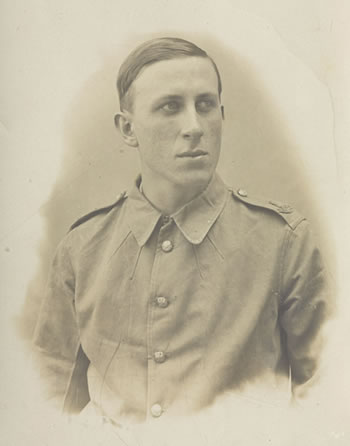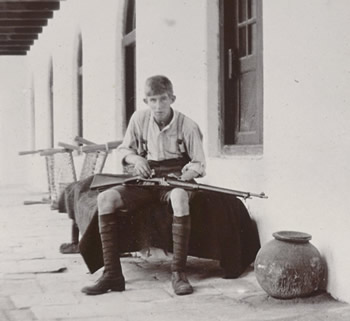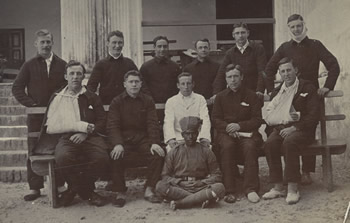Harrowing Diaries Of Wimbledon Soldier Are Now Online
His experiences of World War One trench warfare are revealed
Diaries belonging to World War One soldier, Private William Pryor Jay from Wimbledon, described as one of the most harrowing and graphic personal accounts held by the National Army Museum, go online for the first time today (January 29).
Vivid and shocking – they tell of his experiences of trench warfare in the Middle East.
In January 1916, Private Jay’s regiment was despatched to Mesopotamia, (modern day Iraq), to relieve a British Indian division that had been surrounded at Kut by the Turkish forces since early December.
On 7 January, the troops were told to advance through no-man’s-land towards the Turkish forces. But even before the battle began, Jay’s diary shows the masculine mind-set of young soldiers in 1916: “The fear that one has in battle is negligible compared to the fear of being so afraid that it shows.”
His account quickly moves to the anarchy of battle, as his regiment faced machine gun fire and heavy artillery bombardment from the enemy: “We had advanced a few hundred yards when the long drawn out hiss of bullets passing through us began… Arms and legs and fragments of men were tossed aloft in a swirl of yellow and brown.”
The enemy continued to defend with such fury that the supporting companies were, as Jay recalls, “decimated.” The shellfire became so strong that “the man next to me in the line had to shout the commands into my ear because I had long since gone stone deaf from the noise.” Among the havoc, Jay was struck in the arm by a stray bullet.
Private Jay’s diary allows us to step into his shoes and experience what it might have been like to be a wounded soldier, alone on the battlefield: “I lay perfectly still with my face pressed on the ground and prayed for darkness to come quickly.” But he soon “heard the high pitched sound of a machine gun... I buried my face in the ground, I was too paralysed to think, all my manhood oozed away, I was a terror stricken little child.”
Although he escaped death that day, his diaries demonstrate how men faced further risk in the poorly manned field hospitals. In this case, provisions had been made to handle 250 casualties but the battle saw 4,000 men in need of urgent treatment.
Some were disembowelled and others had skin dyed yellow from the chemicals used in explosive shells. But through all the havoc, Jay remembers the “mutual charity and good will that existed among the wounded. Everybody in my tent did their utmost to assist any of their comrades.”
Jay’s diaries not only recall the cramped conditions and shortage of supplies at the hospital, but they also describe the terrible lack of hygiene that led to an outbreak of dysentery. As he describes: “I shall never forget my disgust and horror at finding myself crawling with loathsome insects...the foul brood even invaded my dressings and penetrated my gaping wound.” Some men had to wait 10 days to be assessed, which for many proved a wait too long.
The Turks withdrew from battle on 8 January, most likely overestimating British strength. British forces pushed on towards Kut, but were unable to break Turkish defences. Attacks by the relief force over the next few months all failed with heavy losses and Jay’s starving garrison was eventually forced to surrender on 29 April 1916.
Jay returned to Basra to have the bullet in his arm removed, re-joining his unit in May 1916 and serving until he was killed in action at Dahra Bend, Mesopotamia, on 15 February 1917.
William Jay, the son of Pryor Jay, a draper, and his American wife Helen Phobe Jay, was educated at the Kings College School, Wimbledon. In 1900 the family resided at 15 Park Road, Wimbledon, but by 1909 they had moved to Murray Lodge on Murray Road, also in Wimbledon.
He had three older sisters, Phoebe, Carrie and Grace. After leaving school William worked in his father’s shop on Regent Street. In August 1909 he attended Officers’ Training Corps at Farnborough Common. The following year he began studying at Wye Agricultural College in Kent.
After his death he was initially buried at Bassonia but later interred at the Amara War Cemetery in Mesopotamia. Kut fell eight days later and Baghdad was occupied by the Allies by 11 March.
The diaries can be read in full on the National Army Museum’s online portal, First World War in Focus, as part of its Soldiers’ Stories series.
What do you think? Why not comment on our forum?
January 29, 2016
Related links
|


